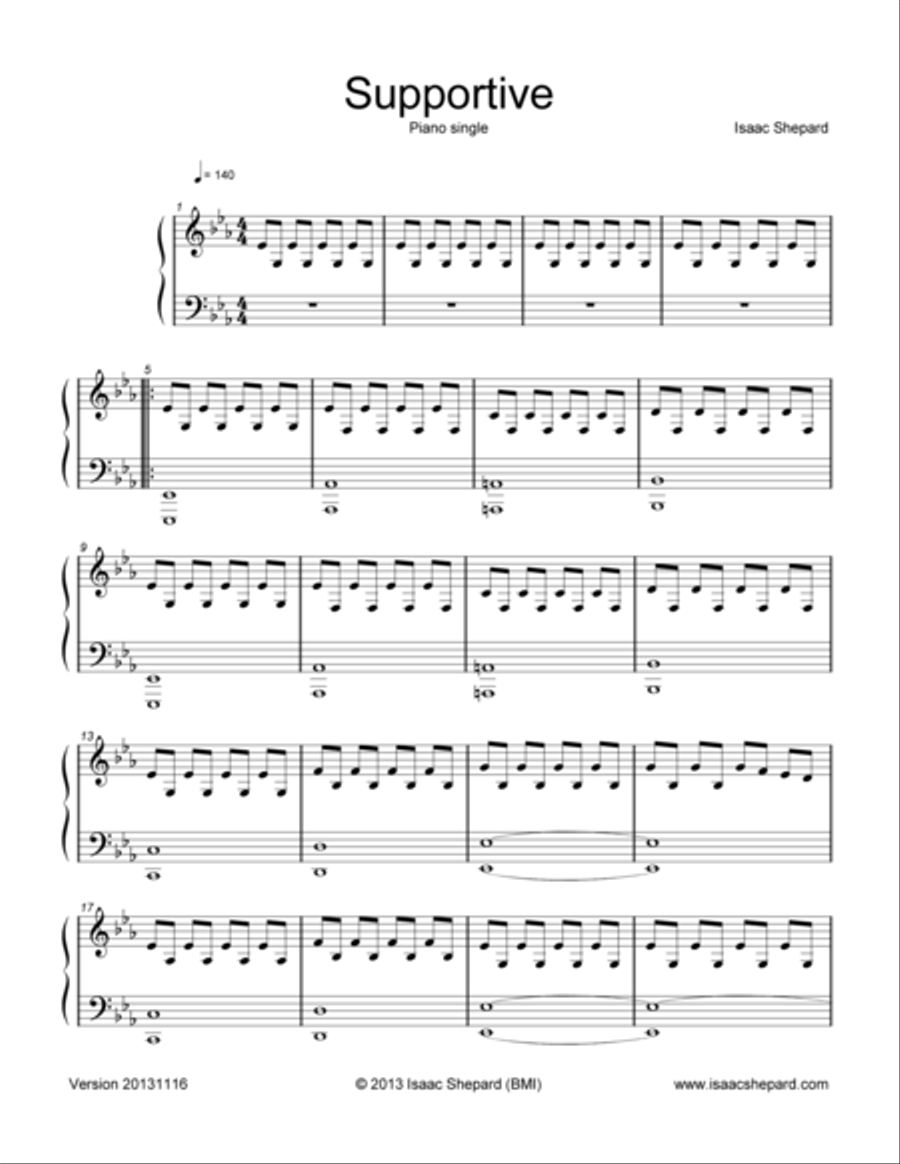Piano Solo - Level 2 - Digital Download SKU: A0.870021 Composed by Isaac Shepard. Contemporary,Pop. Score. 3 pages. Isaac Shepard Publishing #2030231. Published by Isaac Shepard Publishing (A0.870021). Supportive is a piano and orchestra single by Isaac Shepard www.isaacshepard.com Supportive is a reflective, uplifting track. Unlike his five solo-piano albums (Knights and Damsels, Awaken, The Renewing, Deep Joy, and Swept Away), Supportive includes other instruments besides piano, such as strings and percussion. The sheet music is for the piano part only. --- Isaac Shepard is a pianist and composer who lives in Orange County, California. Having composed and performed for over 20 years, he's released several solo piano CD's, written music for over a dozen games, and composed over 300 songs across many genres. His music can be heard in TV/Film, games, dance projects, and other various media projects. Isaac's solo piano music reached #1 on the iTunes New Age charts in the US, Canada, and Spain, #1 on Amazon's Wedding Music category, #4 on the iTunes New Age charts in Taiwan and Singapore, #4 on Amazon's Modern Classical category, #4 on the international radio airplay chart, #9 on Amazon's Easy Listening category, and #9 on the iTunes New Age charts in Malaysia and Hong Kong.
